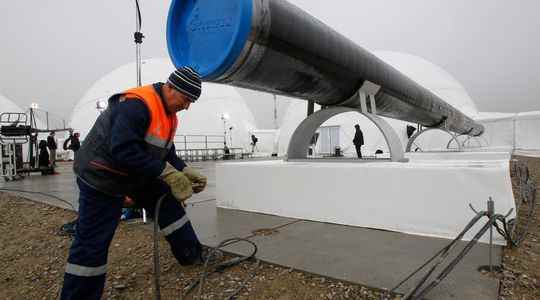Western countries no longer want to depend on Russia for their gas imports. This is why European Union (EU) member countries, many of which depend on products sold by Moscow, have been seeking alternative solutions without harming their national economies since Vladimir Putin launched a war in Ukraine on February 24. last.
Measures to reduce this dependence on Russian gas were thus decided by the United States and the European Union this Friday, March 25 in Brussels. Joe Biden and European Commission President Ursula von der Leyen announced in a statement the creation of a task force.
American liquefied natural gas
In this context, the United States will strive – in cooperation with “international partners” – to supply Europe with an additional 15 billion cubic meters of liquefied natural gas (LNG) in 2022. With an increase in the volumes traded by 6% each year over the past decade, LNG already accounts for 40% of global natural gas trade, compared to 60% for that passing through gas pipelines. It can, thanks to maritime transport, supply consumption areas that are not served by gas pipelines.
The EU is indeed pressed by kyiv and by certain member states, including the Baltic countries and Poland, to adopt drastic sanctions to stop imports of Russian hydrocarbons, in order to deprive the regime of Vladimir Putin of its main resource. economic. Washington has already imposed an embargo on gas and oil on March 8.
But many European states remain opposed to it, because of the strong dependence of the continent: some 45% of European gas purchases come from Russia – this is the case for 55% of German imports, as well as the bulk of supplies from Finland, Hungary and the Czech Republic. Moscow supplies around 150 billion cubic meters of gas each year to the EU, including around 15 billion cubic meters of LNG.
The United States accounted for only 6.3% of total European gas imports in the first half of 2021 – but it is already the largest supplier of liquefied natural gas to the EU. “We were able to make this decision [d’un embargo]while others could not, because we are a net exporter of energy, with a strong sector [dans les hydrocarbures]“, underlined Joe Biden in front of the press this Friday.
Energy savings
The European Commission is seeking to reduce European imports of Russian gas by two-thirds this year, and to completely eliminate them “well before 2030”, thanks to reserve filling obligations, energy savings, purchases gas bundles and supplier diversification.
In addition to its negotiations with the main producing countries (Norway, United States, Qatar, Algeria), the EU had already declared at the end of January that it was working on the supply of “additional volumes of American natural gas” for Europe.
As part of the working group announced on Friday, the European executive will work with member states “with the aim of guaranteeing, at least until 2030, a demand for around 50 billion m3 per year of additional American LNG”. . “This ‘task force’ will work to ensure the energy security of Ukraine and the EU in anticipation of next winter and the following one”, also specifies the joint press release.
Germany’s efforts
Germany, for its part, began an accelerated cure to reduce its heavy dependence on Moscow’s energy resources and almost all oil at the end of the year. The process looks slower on the other hand for gas. “By autumn” the country will be able to live in “quasi-independence” vis-à-vis Russian coal, according to the Ministry of Economy. For gas, the country is aiming for a later date, namely “mid-2024”.
The largest economy in the euro zone imported before the war a third of its oil, some 55% of its gas from Russia, according to German government statistics. Germany has focused its energy strategy in recent decades on massive imports of Russian energy, in particular in the belief that this cooperation would help to democratize the country. A statement of failure.
A change of gas supplier is complicated for Berlin because the transport infrastructure has to be modified. Germany is currently importing its gas from Russia through a developed pipeline network – which should have been further expanded with the Nord Stream II gas pipeline, which was finally suspended. To switch suppliers, the government must therefore build new pipelines – a slow, tedious and expensive process – or import liquid gas from the ocean. This is what Berlin chose: the government released 1.5 billion euros in early March for massive purchases of liquefied gas from diversified producers.
Economy Minister Robert Habeck, of the Green Party, has visited several gas suppliers in recent days, including Qatar, where he signed a long-term delivery agreement on March 21. Thanks to this strategy, Germany has already succeeded in reducing its imports of Russian gas in recent weeks, which now represent only 40%, fifteen points less than before the war. But the country does not currently have a terminal to transport this gas, and therefore depends on the infrastructures located in its European neighbors, which costs it more.
